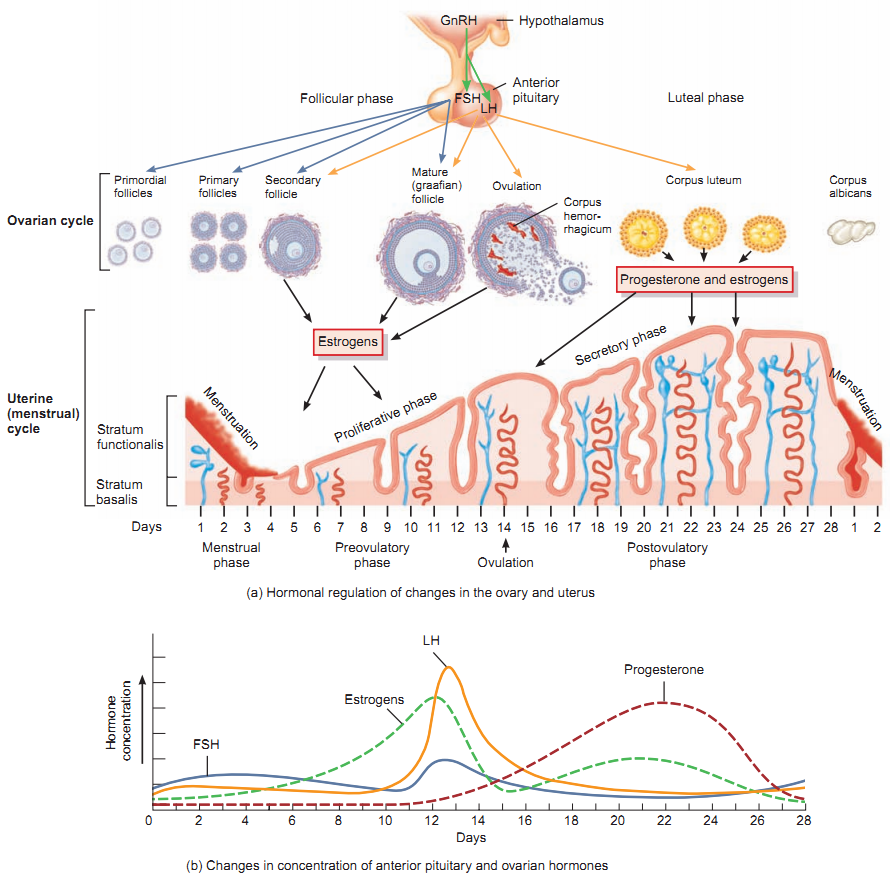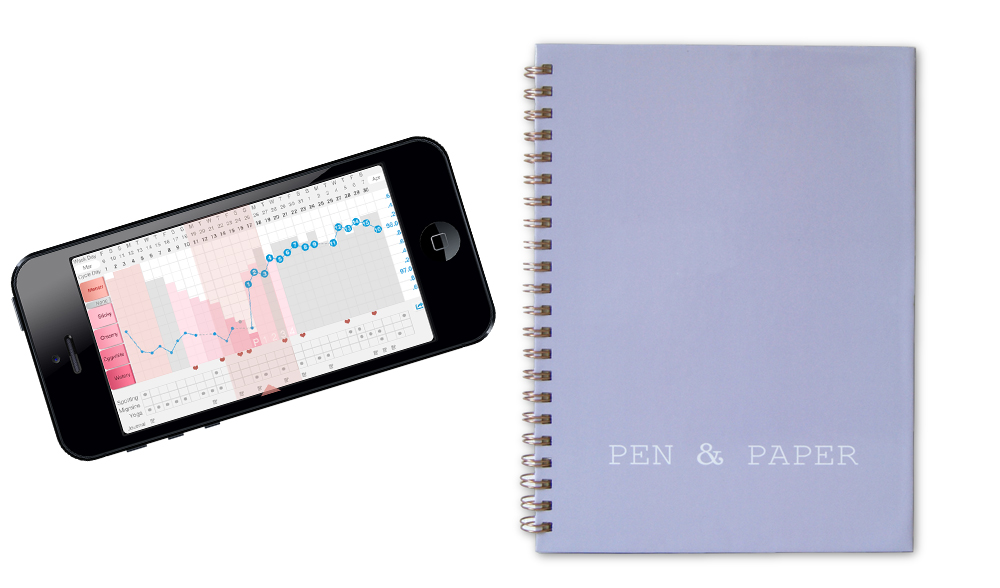
Ok, that’s technically not true, but hopefully the headline caught your attention. I have in fact been using birth control, but it’s a form of birth control that you may not be familiar with. I hope this article changes that, and is useful for at least one person who reads it!
As of November 2016, I downed my last birth control pill, decided “screw this – there has to be a better way” and said a big ol’ SAYONARA to synthetic hormones. I did this primarily because:
- I was dealing with increasing dark hyperpigmentation (melasma) on my face due to the hormones in the Pill (exacerbated by my lifestyle at the time which involved a lot of surfing in the harsh sun), and
- I was experiencing thinning of my hair due to the Pill (it got worse after I quit, before it got better!), and
- I was feeling like an emotional zombie – no highs, no lows, just a weird sense of disconnect from myself and the world around me – almost like looking through a pair of foggy glasses all the time, and finally
- I was increasingly uneasy about how the synthetic hormones in the Pill were affecting my health and fertility on a deeper level. I was considering things like micronutrient absorption, bone health, heart health, breast health, and the artificial suppressing of my endocrine system.
Afterwards, the change was instantaneous and noticeable. I felt I returned to my mentally-present old-self immediately. A guy I worked with at the time literally asked me “What’s changed? You seem.. different somehow, and happier!”.

Anyway, I was still faced with the question of how the hell to avoid an unplanned pregnancy, so I started doing some research, spurred on by a conversation with a colleague. I’m not sure about your experience with rural NZ sex education, but unfortunately they never even scraped the surface of the complexities of the female endocrine and reproductive system, and its implications on our birth control choices. It was more a case of “here’s a horrific video of childbirth – don’t do the sex thing or you will get pregnant immediately and probably die of herpes”.

For anyone who’s getting curious, I looked into a non-hormonal method of birth control called the Symptothermal Method (the STM). The STM is a form of Fertility Awareness that opens up a whole new world of insight into your health. It involves taking your basal body temperature (BBT) daily, and checking your cervical mucus multiple times daily too. These signs help you to track your full menstrual cycle and pinpoint the opening and closing of your “fertile window”. You can use this information to either avoid or achieve a pregnancy.
For those who are reading this in horror please rest assured that the method is based on scientific research. In fact, the research1 shows that the Symptothermal Method has a perfect-use effectiveness rating of 99.6%, and an actual-use effectiveness rating of 98.2%. To put that into perspective, the combined oral contraceptive pill is known to have a perfect-use effectiveness rating of 99.7% and an actual-use effectiveness rating of 92% (although researchers warn that these effectiveness rates cannot be directly compared to the Symptothermal Method due to differences in study designs). The topic of contraceptive effectiveness is very nuanced and I highly recommend that you take the time to read more about it here.

I’m not keen on boring you all with a human biology lesson, but it’s cool to point out a few of the basic scientific premises behind this method:
- Cervical mucus will change2 in consistency, texture, appearance and volume throughout your cycle. Certain types of cervical mucus (that look like raw egg white) are considered highly fertile as they nourish and protect sperm on their journey. Other types of cervical mucus (sticky/tacky) are slightly less hospitable to sperm but can still assist sperm survival. On certain days of the menstrual cycle there may be zero cervical mucus present at all, meaning the naturally acidic pH of the vagina make survival difficult for sperm.
- Your basal body temperature changes3 cyclically to reflect hormone levels throughout your menstrual cycle. Most importantly, once you have ovulated, a temporary endocrine structure in your ovary (the corpus luteum) begins to manufacture a hormone called progesterone. This coincides with a rise in your basal body temperature. Therefore, a raised BBT is an indicator that you have likely ovulated.
- A person can only ovulate once4 in a cycle. It is possible to release multiple eggs during a single ovulation event. In fact, ovulation is considered a 24hour hormonal event (during which time multiple eggs can be released). Human eggs only live for 12-24 hours after ovulation. Therefore, the maximum amount of time that you could have an egg awaiting fertilisation is 48 hours.
- Sperm can only survive5 on average up to 5-7 days within your body, dependent on the type of cervical mucus they encounter.
- Therefore, with the combined life of the sperm and egg/s, you are only able to fall pregnant through unprotected intercourse during approximately 6-9 days of your menstrual cycle. This time period is known as the “fertile window”. Once you have ovulated and the unfertilised egg has been absorbed into your uterine lining, the fertile window closes and you cannot become pregnant.
Essentially, the Symptothermal Method allows you to ask yourself the question “Am I fertile TODAY?”. Your answer will be based on daily observations of temperature and cervical mucus*. You can then make a decision as to what kind of sexual activity you will engage in, depending on the outcome you are aiming for (avoiding pregnancy, or achieving pregnancy).
It’s probably obvious, but please note the Symptothermal Method does not offer any protection against the transmission of STI’s.

The effectiveness rates for the Symptothermal Method are based on couples using abstinence during the fertile window. However, the same study emphasises that there was no statistical difference in effectiveness rates for couples who chose to use a barrier method of protection during their fertile window – this is great news for those who have no religious/moral/ethical reasons to avoid using barrier methods!
This is all sounding straightforward, right?

The Symptothermal Method can be a lot to take in initially. The above fertility signs can be difficult to pinpoint until you’ve spent at least 3 months to either work with an instructor (find one here!) or thoroughly teach yourself the method.
If you want to go down the route of teaching yourself, it is a big commitment and there are four steps you’ll definitely need to take. You can read more about how to self-teach here.
This is also where I butt in with a public service announcement: The Symptothermal Method is not the “Calendar/Rhythm” method. People who use a “Calendar/Rhythm” method track the length of previous cycles to make assumptions about their current or future cycles. This is a risky game of hormonal roulette because there are many lifestyle and environmental factors that can cause you to ovulate earlier or later than expected. These can include stress, travel, diet, illness, exercise and more.
It’s also important to note that the Symptothermal Method is not a miracle solution to any issues you may be facing with your own preferred method of contraception. The Symptothermal Method may not be suited to your lifestyle, your relationship, or your personality. And that’s ok! It is not as spontaneous, not as easy and not as convenient as simply popping a pill every day, having Nexplanon implanted or having a NuvaRing, Mirena or copper IUD inserted (all power to any woman who was brave enough to go through with an IUD insertion though). It means you do need to have self-control and a partner who is ok with using a barrier method during certain stages of your cycle.

The Symptothermal Method may not be suited to you if you suffer from Endometriosis or severe Polycystic Ovarian Syndrome. For anyone dealing with these serious issues, hormonal contraception (such as the Pill) can occasionally play a role in allowing you to live a symptom-free life – and it should always be up to you to make that decision for yourself. For others with milder hormonal imbalances, hormonal birth control often conveniently masks the frustrating symptoms of those imbalances (such as acne, heavy bleeding, excessive mood swings etc). However, it doesn’t fix the root issue or “regulate your cycle”, it simply overrides your endocrine system with synthetic hormones. The root issue will usually resurface later down the track once the synthetic hormones are withdrawn (say, when you decide you want to try to conceive). In that regard, it’s worth noting that tracking your BBT and cervical mucus can help you to pinpoint certain hormonal/health issues you may have. This is because it provides clear, visual data on how your hormones are interacting at different points in your cycle.
In saying all of the above, the benefits for me personally are huge in terms of my own physical health and mental well-being. I have found a method of contraception that aligns with my outlook on:
- environmental issues
- female education and empowerment, and
- the importance of respecting and caring for the body you’re living in
It gives me a pretty big sense of satisfaction and bodily peace. I no longer feel like the emotionless zombie I was on the Pill (not to mention the bloating, hair loss and hyper-pigmentation). I’m happy to ride the cyclical changes of mood and disposition that occur throughout my natural cycle and appreciate the highs and the lows as they come. I feel clear-headed and in control of my own body. Most of all, I feel empowered with the knowledge I’ve gained on how my reproductive and endocrine systems function.

Navigating your fertile years can be daunting. I’ve personally felt frustrated that as women we are often left with the responsibility of doing all the research, bearing the brunt of any side-effects, and experimenting with countless different methods on our mission to find the right contraceptive “fit”. This is even more frustrating when you realise that men are fertile “24/7” whereas the owner of the uterus is only fertile for a small window once every cycle! Either way, it’s undoubtedly a journey. However, I hope that my experience offers you a glimpse at an underutilised option in your “contraceptive toolbox”. I’m keeping an open mind myself; I acknowledge that what suits me now may not suit me in future. Mostly though, I feel lucky to be able to choose from so many options, and even more so to have stumbled across this method. I’m genuinely grateful that I live in an age and a country where information and educational resources are readily available to me if I decide to go looking!
~Useful sources and notes~
Please note that there are countless clinical trials and systematic reviews published in reputable medical journals to support the effectiveness and validity of the Symptothermal Method as pregnancy prevention. The below links are a very small snapshot into some of these studies.
1Many infographics and commonly available information sources online will inaccurately portray STM as having a very low effectiveness rating. This is misleading. In short, STM is considered a “Fertility Awareness Based Method” (FABM). FABM’s also include the ‘Rhythm/Calendar’ method. Therefore, when sources report on the effectiveness of FABM’s, they are averaging out effectiveness ratings of a number of different methods (including STM and the ‘Rhythm/Calendar’ method). The result is that effectiveness rates for STM are skewed downward when assessed as a FABM, and stand-alone effectiveness ratings for STM are not widely available unless you do your own research (“The effectiveness of a fertility awareness based method to avoid pregnancy in relation to a couple’s sexual behaviour during the fertile time: a prospective longitudinal study” by P. Frank-Herrmann, J. Heil, C. Gnoth, E. Toledo, S. Baur, C. Pyper, E. Jenetzky, T. Strowitzki, G. Freundl).
2Cervical mucus changes:
- Article on the Morphological characterisation of different human cervical mucus types using light and scanning electron microscopy (“Morphological characterisation of different human cervical mucus types using light and electron microscopy” by M. Menarguez, L.M. Pastor and E. Odeblad)
- Article on how cervical mucus observations can identify days with high conception probabilities (“Mucus observations in the fertile window: a better predictor of conception than timing of intercourse” by J.L. Bigelow, D.B. Dunson, J.B. Stanford, R. Ecochard, C. Gnoth and B. Colombo)
- You can download an older article here outlining the discovery of different cervical mucus crypts within the cervix, and different types of cervical mucus that are emitted from these crypts (“The discovery of different types of cervical mucus” by E. Odeblad)
3Basal Body Temperature changes:
- Ovulation results in a rise in basal body temperature (“The effect of endogenous progesterone on basal body temperature in stimulated ovarian cycles” by R.G. Forman, M.C. Chapman and P.C. Steptoe)
4A person ovulates once during a menstrual cycle:
- In-depth overview of the menstrual cycle (“The normal menstrual cycle and the control of ovulation” by B.G. Reed and B.R. Carr)
- Most people who argue a woman can ovulate more than once in a menstrual cycle will reference this article (“A new model for ovarian follicular development during the human menstrual cycle” by A.R. Baerwald, G.P. Adams and R.A. Pierson). Unfortunately this is because it was incorrectly reported in a sensationalist news article that summarised it as “Women can ovulate two or three times a month”. Read an interview with the lead researcher Roger Pierson here (“A cautionary tale about research that touches a nerve” published by University of Saskatchewan’s own On Campus News) who says that “That story claimed women ovulate two or three times a month and that’s simply not true“. In fact, if you read the original research article you will find that it supports the existing knowledge that women only experience one ovulation event per menstrual cycle. The researchers did however discover that leading up to a single ovulation event, a woman will have many waves of anovulatory follicular development. This culminates in one final ovulatory wave of development that produces one final ovulation event.
5Sperm lifespan within cervical mucus: There are many factors that will influence the period of time that sperm may remain alive within the female reproductive tract. These can include such factors as cervical mucus type at time of coitus, and morphology of the sperm itself (among many, many other factors).
- Article on in vivo survival of spermatozoa in cervical mucus (up to 7 days after insemination or intercourse) (“In vivo survival of spermatozoa in cervical mucus” by W.H. Perloff and E. Steinberger)
- Article on the timing of intercourse in relation to ovulation showing an average 6-day fertile period. (“Timing of sexual intercourse in relation to ovulation – Effects on the probability of conception, survival of the pregnancy, and sex of the baby” by A.J. Wilcox, C.R. Weinberg and D.D. Baird)
- Article on sperm selection in natural conception which contains a comprehensive overview of current literature as a key research method, while comparing in vivo conception with assisted reproduction. Recently published in 2015. (“Sperm selection in natural conception: what can we learn from Mother Nature to improve assisted reproduction outcomes” by D. Sakkas, M. Ramalingam, N. Garrido and C.L.R. Barratt)
*Many people who practice STM also choose to check the position and openness of their cervix daily. Having 2-3 fertility signs to cross reference between, reduces the chance of error when interpreting the daily data you obtain from each indicator of fertility.
The above links to further information are live as at April 2018. Please note that I am not a medical professional and this blog is based on my own experience and understanding of STM and its application to my own life. Always do your own research, and speak with a registered medical professional if you have any reproductive health concerns.



GIRL YOU ARE INCREDIBLE! You better believe I am going to use this as a regular resource! THANK YOU for providing so many amazing materials for the FAM world!
This is perhaps the most comprehensive and yet readable blog post I’ve seen on this topic. You did a great job of simplifying the biochemistry without dumbing it down. Thanks for putting together this wonderful resource!
Awesome read. It caught my attention and good to know. I have up the pill a few years ago now as Just was over having an artificial pill since my teenage years. Natural and pure is what I believe in. Thanks for the insight!
Amazing article, JB! So proud of all you’re doing to share your story, provide women with charting tools, and spread accurate info about STM / FAMs!